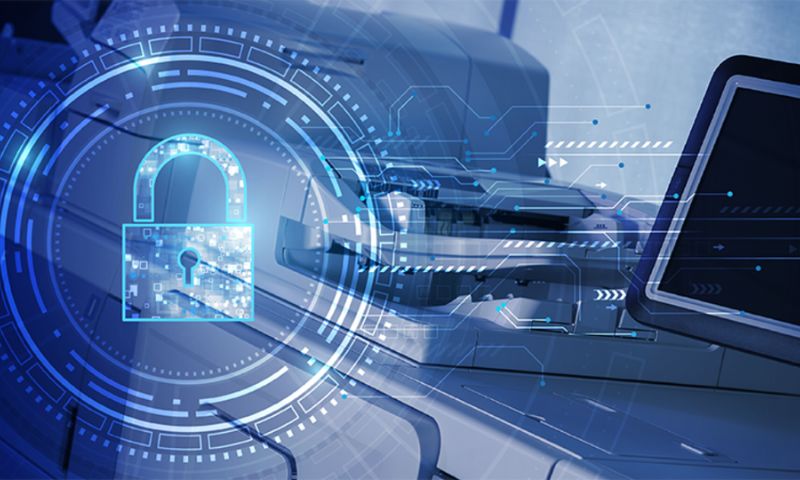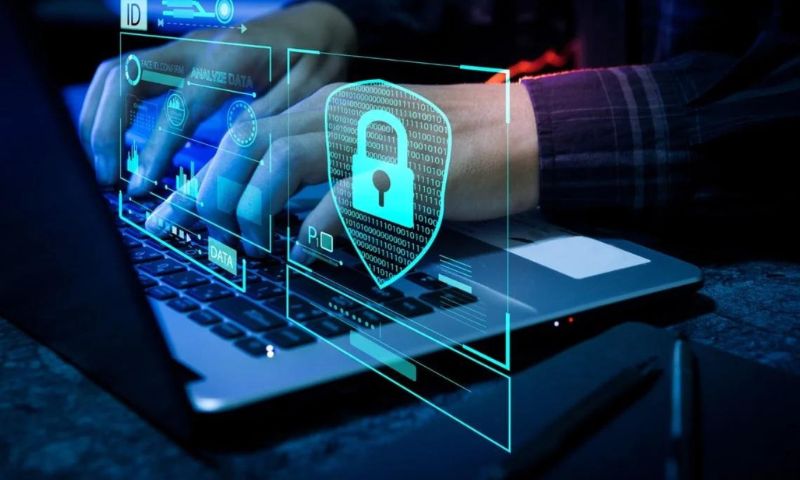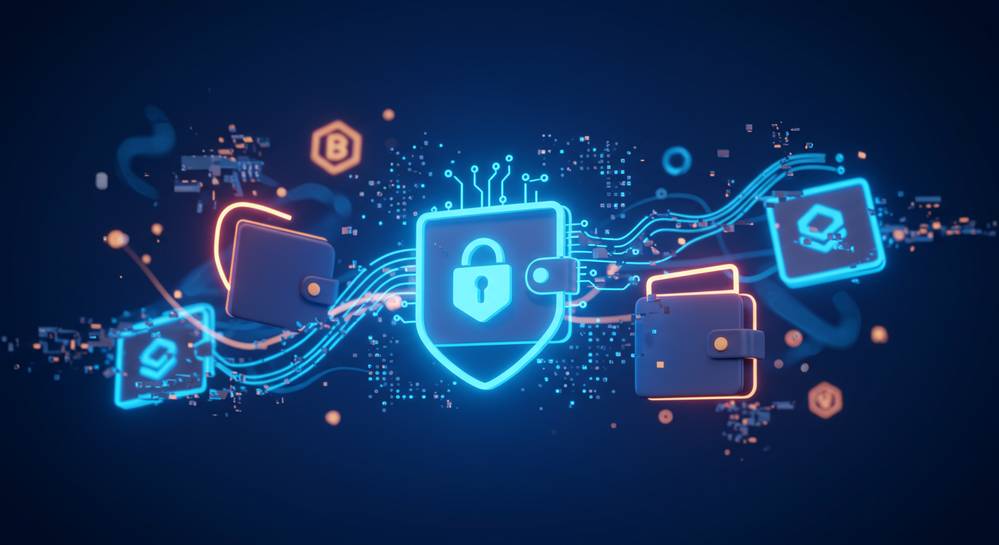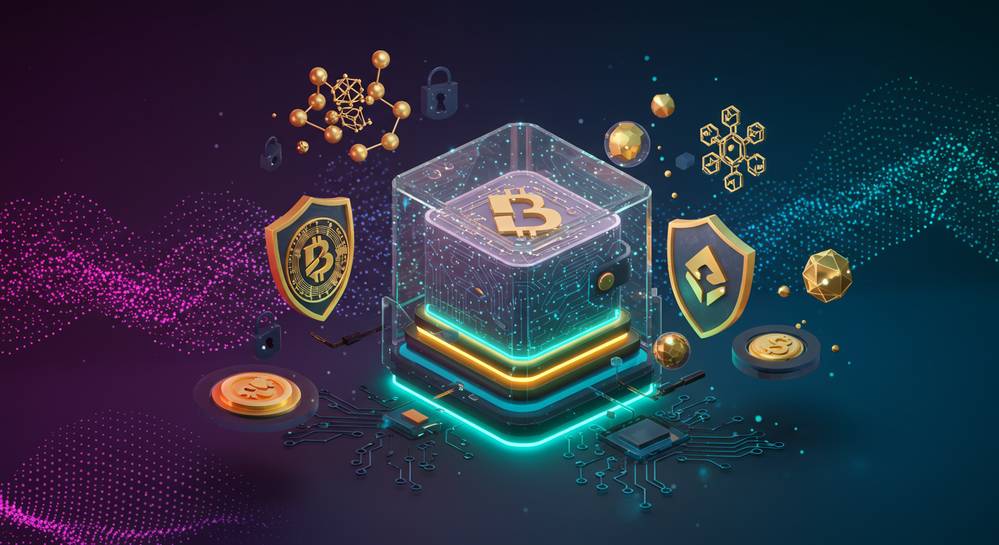How to keep your cold wallet safe is more than a goal—it’s a must for any crypto user. Imagine peace of mind, knowing your digital fortune sits locked away, immune to online threats. But where do you start? In this guide, I’ll walk you through the essentials of cold wallet security, from choosing the right hardware to setting up a fortress of safety for your digital assets. With a straightforward approach, I’ll break down complex security strategies into easy steps. Dive in as we strengthen your crypto defense against the digital wilds.
Fundamentals of Cold Wallet Security
Understanding Cold Wallet vs. Hot Wallet
A cold wallet is like a vault. It’s offline, so it’s safer. A hot wallet is online. Think of it like your pocket. It’s good for quick use but not as safe. Why? It’s more open to online thieves. So, use a cold wallet to keep large amounts of crypto locked away.
Now, let’s dive into cold wallets. They’re offline, meaning no internet access. This cuts the risk of online hacks. Think about it like this: if your wallet isn’t online, hackers can’t reach it. Simple, isn’t it?
A hot wallet, on the other hand, is always online. This is handy for daily trading. But it’s risky too. Online wallets face threats from everywhere. So I say, use them less, and only for small sums.
Implementing Crypto Cold Storage Best Practices
First up, always use a hardware wallet. It’s a small, USB-like device. This keeps your crypto offline and safe. Is it better than a paper wallet? Yes! It’s tough, and less likely to get damaged or lost.
Next, let’s talk protection for your hardware wallet. Make a strong PIN. And don’t share it! Think of your PIN like a toothbrush. It’s yours alone. Keep your hardware wallet in a safe place too. Maybe in a locked drawer or a safe. Just like you wouldn’t leave cash on the table, don’t leave your hardware wallet out.
Now, about private keys. They’re like the master key to your crypto vault. Write them down. But secure passphrase storage is crucial. Use something strong and unforgettable. Then, store it like a treasure. Consider a metal backup solution. It’s fireproof and lasts longer than paper.
And, friends don’t let friends forget about backups. If you lose your wallet or it breaks, backups will save you. Offline backup strategies are your best friend. They keep your crypto safe even when things go wrong.
Physical security is big, too. If someone gets your hardware wallet, your crypto might be gone. So, secure it like gold. Put it in a safe or hide it well. And when you travel, be smart. Keep your cold wallet close but hidden.
Lastly, update your wallet’s firmware. It’s like giving your wallet a strong, new armor. Check for updates regularly. They fix weak spots and keep your crypto safer.
Remember, the key here is layers. More layers make it harder for thieves. Just like in a game, you add armor to your character. Every little step fortifies your cryptos’ safety. From your PIN to how you store the backup phrase—every choice counts.
Keep learning and stay updated on new tips. Always aim to build a stronger fortress around your crypto. Stay safe, and keep your digital gold secure!

Advanced Protection Strategies for Hardware Wallets
The Significance of Multi-Signature Wallets and Biometric Authentication
In the crypto world, we know one rule is golden: Keep it safe, or risk losing it all. Hardware wallets are like vaults for your digital wealth. But even a vault can be cracked if you’re not careful. Let’s beef up that security!
Ever heard of multi-signature wallets? Think safety in numbers. Each wallet needs more than one key to open. This means if one key is lost or stolen, your stash stays safe. It’s teamwork for your wallet!
And then there’s biometric authentication. It’s personal. It’s unique. Your unique traits – like fingertips – lock down access to your wallet. Hackers can’t duplicate this.
Encryption Techniques and Secure Passphrase Management
Encryption is your invisible armor. It scrambles your data, so prying eyes see gibberish. Only with the right key can you make sense of it again. Think of it like a secret language between you and your wallet.
Now, onto passphrases. They guard the door to your wealth. The trick? Make them tricky. Use random words. Make them long. And never use something easy to guess. That’s like using “password” as your password – don’t do it!
Good passphrase management is keeping it under lock and key. Write it down, but here’s the kicker – no plain sight. Hide it well. Better yet, split it up. Store parts in different places.
Keep these strategies in mind, and your hardware wallet turns into a fortress – unbreakable, with your cryptocurrency safe and sound.
Physical and Environmental Safeguards for Your Cold Wallet
Damage Protection for Cold Storage
Your cold wallet is your safe haven for crypto. But it can’t fight off damage alone. It needs your help. Use tough cases and covers to guard it. They act like a shield against drops, spills, and crushes. Remember, treat your wallet like a raw egg. It’s that delicate.
Now, imagine you’re heading out with your wallet. Keeping it secure during travel is key. Think of clever hiding spots. Hide it in less obvious things like a book or a box for other electronics. And always keep your eyes on it. If you’re not looking, thieves might be.
Environmental Hazards and Handling Wallet Degradation Over Time
We don’t control the weather, but we can prep for it. Extreme cold or heat can harm your wallet. So can moisture or a wild storm. Keep your wallet in a stable place. Avoid spots that go through big temp changes. A cool, dry, and steady place is what you need.
Time is sneaky. It can weaken your wallet when you’re not watching. Check on your wallet. Look for signs of wear and tear. Do this often. Update your hardware wallet’s firmware. It’s like giving it a shield against new threats.
Got secret keys and codes? Write them down. Use metal backup solutions. They last longer than paper. Metal can survive fire and floods. But keep it hidden. Secure passphrase storage is like keeping a treasure map safe. If someone finds it, they find your treasure.
What about air? It sounds weird, but keeping an air-gap is vital. It means your wallet never touches the online world. This is like living on an island away from hackers. Make sure your wallet stays offline as much as needed.
Lastly, no amount of caution is too much. Do a cold storage vulnerability assessment yourself. Or get a pro to help. It’s like a check-up for your wallet. Better safe than sorry!
That’s the deal. Your wallet is a tiny vault for your crypto dreams. So watch over it. Keep it safe from bumps, bad weather, and sly hackers. With these tips, your wallet stays strong. It stands tall among the many random risks it faces daily. Keep guard, and carry on!

Maintaining Security and Recovery Protocols
Offline Crypto Wallet Backup Strategies
We all want to keep our crypto safe, right? A golden rule is: always back up your cold wallet. Without a backup, you risk losing all your crypto if things go wrong. Offline backups are best; they keep your data far from online threats.
Now, what’s a solid offline backup strategy? Well, think physical. Write down your private key or recovery seed on paper. Or better, use a metal backup solution. Metal resists fire and water better than paper.
Store this backup in a secure spot. This could be a safe in your home or a safe deposit box at a bank. Make sure only you, or someone you really trust, knows where it is. Keep this location secret from others.
Also, consider making multiple backups. Spread them across different safe locations if you can. This way, even if one backup is lost, you have others.
Lastly, remember to keep your backup info up to date. If you update your wallet or switch to a new one, update your backups too. This will help you keep your crypto safe, no matter what.
Formulating a Disaster Recovery Plan for Crypto Assets
Now, let’s say disaster strikes. Think fire, theft, or even a broken wallet. A disaster recovery plan is your playbook for bouncing back.
First, list out all your crypto assets. Know where they are and how they’re protected. This listing helps if you need to recover anything.
Get insurance if you can. Some companies now offer insurance for crypto holdings. This might help you get back your investments if they’re stolen or destroyed.
Then, plan for the worst. What would you do if your cold wallet was in a fire? Who would you call first if your crypto assets got stolen? Answering these questions now is way better than panicking later.
Also, share your plan with someone you trust. If something happens to you, someone should know how to keep your assets safe. But make sure this person is super trustworthy and knows how to handle crypto.
Use strong security features too. For instance, enable multi-signature options on your wallets. This means you need more than one key to get into your wallet. It’s like having two locks on your front door instead of one.
Biometric security can help here, too. Think fingerprint scans. They add another layer of protection on top of your passwords and keys.
And always, always keep your software up to date. When your wallet software has an update, go for it. These updates often have security fixes that keep hackers away.
In short, having a solid backup and a good disaster recovery plan means you’re ready for anything. It keeps your stress down and your crypto safe. Remember, in the world of crypto, your security is in your hands!
In this post, we delved into keeping your crypto safe with cold wallet security. We explored the differences between cold and hot wallets and uncovered smart steps for using cold storage. I also shared advanced methods to shield your hardware wallet, focusing on multi-signature tech and how biometrics can add an extra layer of safety. We tackled the importance of encryption and staying sharp in passphrase management.
We didn’t stop there. We talked about protecting your wallet from physical harm and the risks your environment might pose. To top it off, I walked you through the must-dos for backing up your offline wallet and crafting a bulletproof disaster recovery plan.
It’s a high-stakes game, safeguarding digital currency. Doing it right means peace of mind, and that’s priceless. Remember, it’s not just about the tools you use; it’s how you use them. Take these insights, apply them, and stay a step ahead in the crypto world. Your future self will thank you. Keep your assets secure, and you’ll navigate the digital finance landscape with confidence.
Q&A :
How can I protect my cold wallet from theft or loss?
To ensure the safety of your cold wallet, always keep it in a secure location that only you can access. Consider using a safe or a safety deposit box. Additionally, make sure to use a complex and unique passphrase to encrypt your wallet if possible, and never share your private keys or passphrase with anyone. Physical protection such as tamper-evident seals can also alert you to unauthorized access.
What are the best practices for backing up a cold wallet?
It’s crucial to back up your cold wallet by writing down the seed phrase or private keys on paper or a metal backup and storing it in a different secure location. This step ensures that you can recover your funds if the original device is damaged or lost. Remember that any digital copy of your backup is vulnerable to hacking, so it’s best to keep this information offline.
Can malware affect my cold wallet?
While a cold wallet is not connected to the internet and thus less susceptible to online hacking attempts, it can still be compromised by malware if it ever interacts with a compromised computer or device. To avoid this, you should ensure your cold wallet only comes into contact with clean, malware-free devices when you are setting it up or making transactions.
Is it necessary to update the software of a cold wallet?
Yes, regularly updating the software of your cold wallet is important as it ensures you have the latest security features and bug fixes. Always verify that you’re downloading updates from the official source and check for the authenticity of the software. Perform these updates in a safe environment, disconnected from potentially insecure networks.
How often should I check my cold wallet for integrity?
Regular checks on the integrity of your cold wallet are recommended, especially if you use it to store significant amounts of value. Periodic inspections every few months can help you ensure that the physical state of your cold wallet has not been compromised and that it functions properly when you need to use it. Always handle the check process in a private, secure environment.




